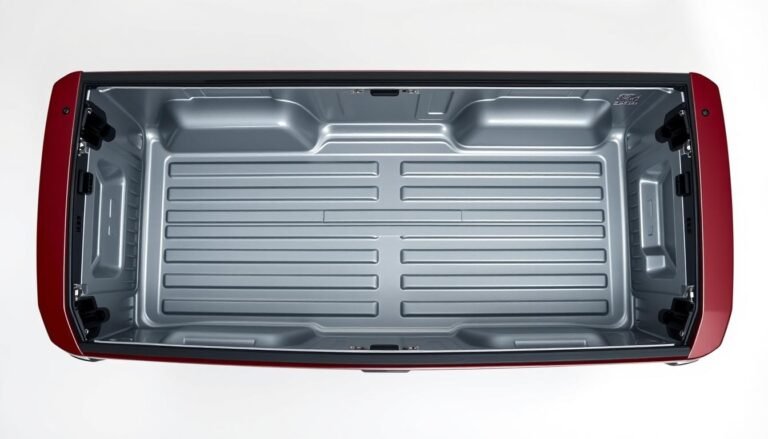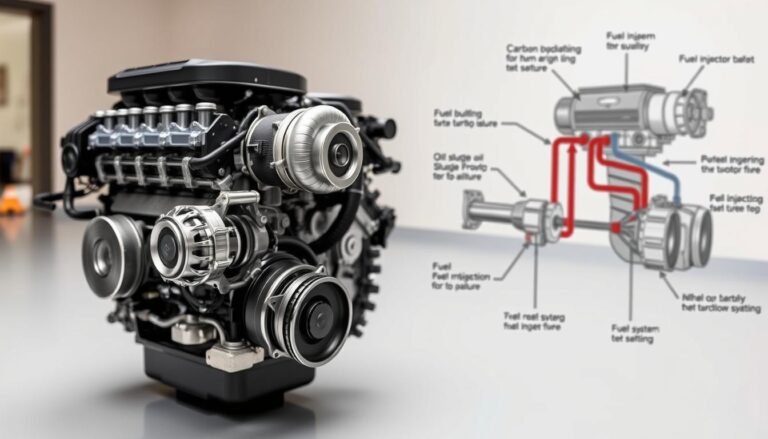Manufacturer Control Code Ford Better Guide
What’s a manufacturer control code for Ford? It’s a special code to identify and fix issues in your Ford vehicle.
Knowing these codes is key for every Ford vehicle owner. They help with diagnostics and upkeep, making sure your car runs well.
This guide will give you a deep understanding of the manufacturer control code Ford. You’ll see how these codes help your vehicle’s performance and dependability.
In this guide, you’ll learn about Ford’s manufacturer codes, including how they are made and why they’re crucial for keeping your vehicle safe.
We’ll also show you steps to find and understand these codes. By the end of this guide, you’ll be better at using Ford manufacturer codes to solve possible problems and keep your car working its best.
Let’s explore the world of manufacturer control codes and learn more about your Ford vehicle!
Introduction To Manufacturer Control Codes
Manufacturer control codes are essential tools used by car companies like Ford. They help find problems or specific settings in a car’s systems.
These codes are key in the diagnostics process. They let mechanics correctly find and fix issues in a car’s operation. Knowing these codes helps you keep your car running well.
What Is A Manufacturer Control Code?
A manufacturer control code is a special alphanumeric code that car makers give to share information about certain issues or system setups.
This code helps technicians understand a vehicle’s performance. It points out parts that are not working right.
Knowing the manufacturer control code Ford uses helps you deal with any warnings your car shows.
Importance of Knowing Control Codes
Learning control codes is very important. They let you catch problems early, before they turn into big safety risks or expensive fixes.
Knowing about these codes helps you understand what your car needs. This makes sure you act quickly to any warnings. By doing this, you keep your car in its best shape.
| Aspect | Description |
|---|---|
| Definition | Unique identifiers for vehicle issues or settings. |
| Uses | Diagnostics, maintenance, and repairs in vehicles. |
| Benefits | Early detection of issues, improved vehicle performance. |
| Examples | Engine malfunction, transmission faults, sensor errors. |
What is The Ford Manufacturer Codes?
Ford manufacturer codes are special in that they are made just for Ford vehicles. These codes are key for anyone working on Ford cars. They help a lot in figuring out and fixing car problems.
What Makes Ford Manufacturer Codes Unique?
These unique codes follow Ford’s engineering rules and standards. Unlike common codes used by different brands, Ford’s codes are specific.
This means technicians can get exact details on a car’s systems. This focus on Ford’s tech makes solving problems easier.
Common Uses of Ford Manufacturer Codes
Ford’s codes help solve many problems specific to their cars. Here are some uses:
- Diagnosing engine performance issues
- Analyzing emissions-related faults
- Checking safety system alerts
- Facilitating recalls and service bulletins
With these special codes, technicians can do detailed checks and repairs on Ford cars. This makes the cars safer and more reliable.
How Diagnostic Trouble Codes (DTC) Work?
Diagnostic Trouble Codes (DTCs) play a key role in car maintenance. When the check engine light comes on, these codes hint at possible car issues.
Knowing about DTCs helps you deal with car problems early and makes driving smoother.
The Role of DTCs in Vehicle Maintenance
Diagnostic trouble codes are vital in car care. They alert you when something goes wrong. This makes fixing problems quicker and can save you money on big repairs later.
How DTCs Are Generated
DTCs come from the car’s onboard diagnostic system spotting an issue. Sensors check the car’s functions. If something’s off, a DTC pops up.
Each code, a mix of letters and numbers, points to a specific problem. Knowing this helps you find and fix car issues correctly.
Manufacturer Control Code Ford
Learning about Ford’s control code is key for good car care. Ford uses a mix of general and specific codes for fixing problems. This method makes sure your Ford is always running well.
Overview of Ford’s Control Code System
Ford’s control code system is crucial for finding out what’s wrong with a car. It has:
- Generic OBD-II Codes: These codes are common across all cars. They cover widespread issues.
- Manufacturer-Specific Codes: These are made just for Ford vehicles. They help pinpoint issues more precisely.
Technicians get the right tools to fix Ford cars right.
Differences Between Generic and Manufacturer-Specific Codes
Generic codes look at car problems broadly. Manufacturer-specific codes focus on Ford alone. Here are their main differences:
| Feature | Generic Codes | Manufacturer-Specific Codes |
|---|---|---|
| Scope | Used across different brands | Unique to Ford vehicles |
| Detail Level | Basic issue identification | In-depth diagnosis and specifics |
| Use Cases | Repair shops and DIY mechanics | Ford-specific service and maintenance |

The Significance of Vehicle Control Codes
It’s vital to understand vehicle control codes for your Ford’s upkeep and repair. These codes are key for finding problems and improving your car’s dependability and safety.
Let’s see how they help in spotting issues and boosting car performance.
How Codes Help in Troubleshooting?
Vehicle control codes offer quick clues about possible faults when you have car trouble. Mechanics use these codes to find and fix problems swiftly, saving you time and cash.
By correctly interpreting these codes, experts can target the real issue without unnecessary checks.
Impact on Vehicle Performance and Safety
Correctly interpreting vehicle control codes is crucial for your Ford’s performance and safety. Acting on these codes in time means smoother drives and less accident risk.
They promote regular car care, extending your vehicle’s life. Also, reacting to warning signs prevents breakdowns, ensuring safety on every trip.
Accessing The Ford Control Code Database
Ford has a detailed control code database, useful for technicians and car owners. This database covers lots of manufacturer-specific codes and what they mean.
Learning how to use this database well can help you quickly figure out car problems.
Where To Find Ford Control Codes?
The Ford control code database can be found in a few important places:
- Official Ford Website: There’s a special section for searching and finding control codes.
- Automotive Repair Shops: Many shops have subscriptions that include Ford’s complete vehicle code lists.
- Online Automotive Forums: Car fans and experts often share helpful links and resources for finding codes.
Knowing The Database Structure
The layout of the database is key to finding codes effectively. Generally, the Ford control code database is set up to be user-friendly:
| Section | Description |
|---|---|
| Fault Codes | Lists specific manufacturer codes along with defect descriptions. |
| Common Issues | Gives information on common problems and how to fix them. |
| Technical Specifications | Has details on vehicle parts related to the control codes. |
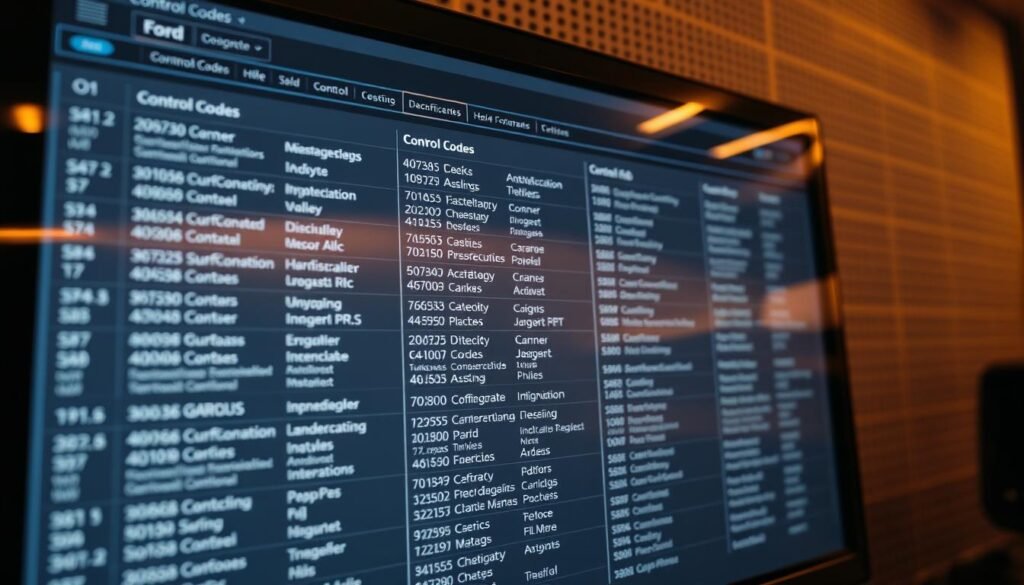
Control Code Lookup Ford
Looking up control codes for your Ford can pinpoint problems in the car’s system. You don’t need to be an expert, with the right tools and some know-how, it’s simple.
Here’s how you can do a thorough code search.
Steps To Perform A Control Code Lookup
- Connect an OBD-II scanner to your vehicle’s diagnostic port.
- Turn on the ignition without starting the engine.
- Access the scanner’s menu and select the option to retrieve trouble codes.
- Make a note of any codes that appear.
- Cross-reference these codes with the Ford control code database to identify specific issues.
Tools Needed For Effective Lookup
To do a proper control code lookup for Ford, these tools are required:
- OBD-II Scanner: Essential for reading diagnostic trouble codes.
- Ford Control Code Database: This can be accessed online or through a dealership for accurate reference.
- Vehicle Repair Manual: Provides additional context for troubleshooting based on the found codes.
Interpreting Ford Diagnostic Trouble Codes
Learning to interpret Ford DTCs takes some basic understanding. You need to know how the codes work. They start with a letter and are followed by four numbers.
This layout tells you what’s wrong with your car. By getting this, you can find and fix car problems better.
How To Read DTCs in Ford Vehicles?
If your Ford gives you a Diagnostic Trouble Code, first look at the letter it starts with. This letter shows which car part is having trouble.
Then, the numbers that follow tell you more about the problem. Here are steps to understand these codes:
- Use a scanner to get the codes.
- Check the first letter to see which part it’s about, like P for the engine and other parts.
- Look at the next numbers to figure out the exact issue.
- Find a repair guide or online help for more on these codes.
Common Ford DTC Examples
Knowing common Ford codes helps with fixing problems. Below are some codes you might see:
| DTC Code | Description |
|---|---|
| P0171 | Fuel Trim System Lean (Bank 1) |
| P0420 | Catalytic Converter Efficiency Below Threshold (Bank 1) |
| P0300 | Random/Multiple Cylinder Misfire Detected |
| P0455 | Evaporative Emission Control System Leak Detected (large leak) |
Getting familiar with these DTCs makes you a smarter car owner. It helps you deal with car problems early on.
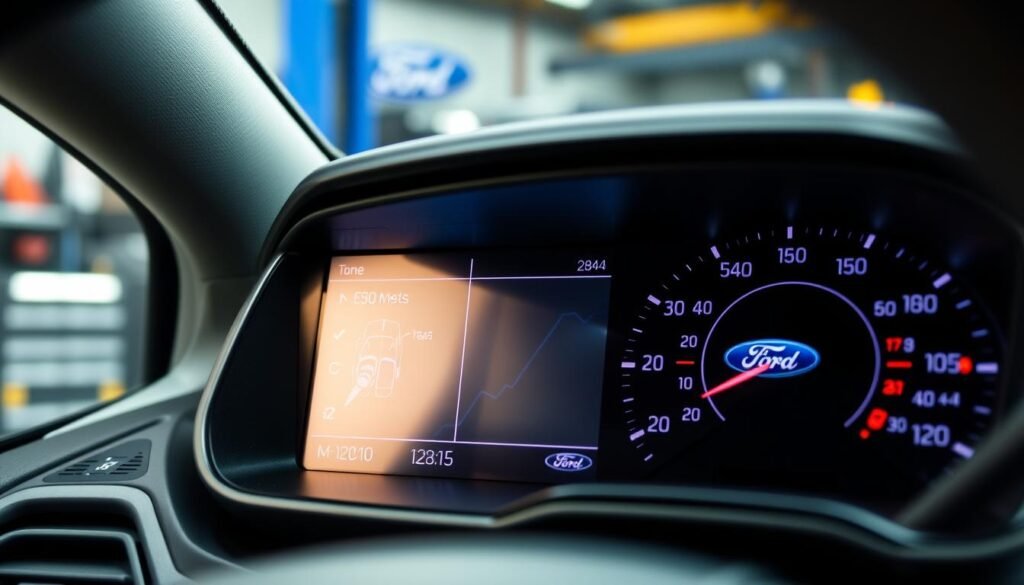
Ford Manufacturer Identification Code
The Ford Manufacturer Identification Code is key for identifying Ford vehicles. It tells you where the vehicle was made, its model, and details.
Knowing this code is important for vehicle upkeep and fixing problems.
What Is A Manufacturer Identification Code?
A manufacturer identification code is a unique code given to each vehicle by its maker.
For Ford, this code includes letters and numbers that tell about the vehicle’s specific features.
This code is crucial for getting the right parts and ensuring proper service for your vehicle.
The Importance of Identification Codes in Reference Materials
Identification codes are very important. They help you find the right parts and information for fixing your Ford vehicle.
Knowing these codes makes talking to mechanics and service centers easier. It leads to better vehicle care and helps it last longer and stay safe.
Ford Executive Control Codes
Getting to know Ford engine control code is key for your car to work well. These executive control codes are super important because they deal with how the engine runs and the car’s health.
By understanding these codes, you can keep your car running smoothly and efficiently.
Compromise Engine Control Codes
The Ford engine control code tells you exactly how the engine is doing. This info comes from the car’s own computer, which keeps an eye on the engine.
If something goes wrong, a code will let you know, so you can fix it before it gets worse.
How They Relate To Vehicle Functionality?
These codes hugely affect your car’s performance. Knowing what the codes mean helps you find and fix engine problems fast.
This way, your car is safer, uses less fuel, and lasts longer. Checking these codes often can also save you a lot of money on repairs.
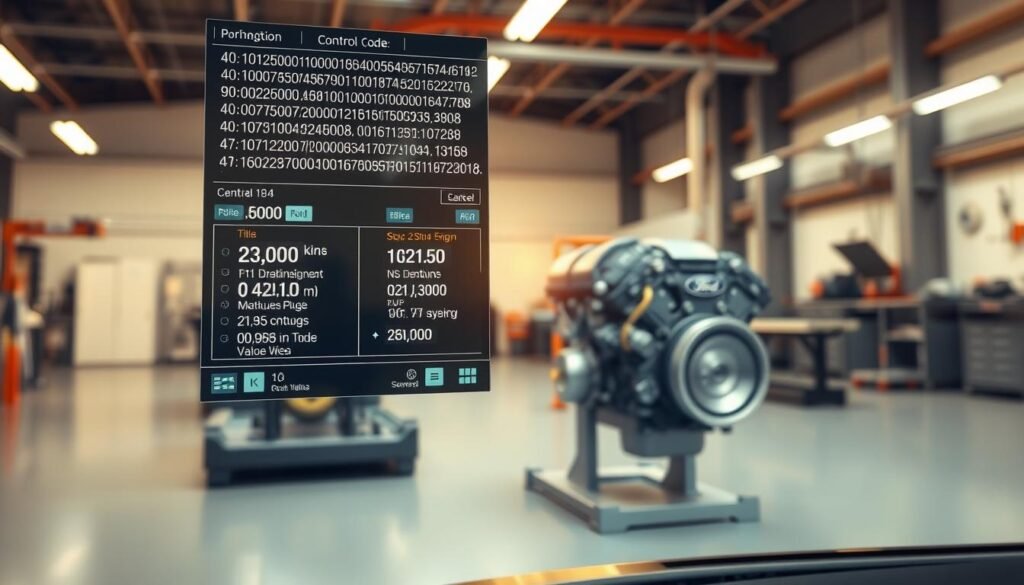
Control Code Verification Process
It is key to know how to check control codes for keeping your car in good shape. This step makes sure the codes from your Ford car really show any problems.
With the Ford database, checking codes helps you decide the right fix to do.
Steps For Verifying Control Codes
- Begin by recording the diagnostic trouble codes (DTCs) displayed during the scan.
- Access the Ford control code database to cross-reference these codes.
- Review the detailed descriptions provided for each code.
- Follow the suggested actions based on verified data.
- Document any changes made post-repair for future reference.
Importance of Verification in Vehicle Maintenance
Verification is super important in keeping vehicles running right. It stops wrong fixes by making sure you have the correct diagnosis.
When you use confirmed data for repairs, you tackle the real issues. This saves you time and money.
Conclusion
Learning Ford’s control codes is key to taking good care of your car. This guide showed their importance in fixing issues, improving a car’s performance, and keeping you safe while driving.
By learning these codes, you can make smart choices for your car’s maintenance. We’ve covered the special aspects of Ford’s codes and the tools for effective diagnosis.
Now, you have a good grasp of how to deal with these control codes. This knowledge prepares you to handle your car’s maintenance and fix problems early.
Using the tips from this guide helps keep your Ford running well for a long time. As you get to know the Ford manufacturer control code better, you’re setting yourself up for a trouble-free and enjoyable driving experience.
FAQs
Q: What is a Ford manufacturer control code?
A: It’s a special code. It identifies vehicle system issues or settings. It’s crucial for fixing and upkeep.
Q: How do I look up Ford control codes?
A: Connect an OBD-II scanner to your car’s diagnostic port. Then, find the codes and check them against the Ford code list.
Q: What are Diagnostic Trouble Codes (DTCs)?
A: DTCs are codes from the car’s diagnostic system for malfunctions. They help find faults and turn on the check engine light.
Q: How does the Ford control code system differ from generic codes?
A: Ford’s system has generic OBD-II codes and unique Ford codes. These special codes give detailed info for Ford cars.
Q: Why is understanding vehicle control codes important?
A: Knowing these codes helps quickly find faults. This saves time and money, and makes your car safer and run better.
Q: What tools do I need for a control code lookup?
A: You’ll need an OBD-II scanner and the Ford code list. You can find this list online or at a dealership.
Q: How do I interpret DTCs in my Ford vehicle?
A: DTCs start with a letter followed by four numbers. They point to specific issues, like fuel systems. This helps you fix problems right.
Q: What is the significance of the Ford Manufacturer Identification Code?
A: This code uniquely identifies each car. It shows the car’s assembly details and specs. It’s key for getting the right parts and repairs.
Q: What steps are involved in the control code verification process?
A: First, write down the codes you get. Then, compare them to the Ford list for solutions. This makes sure you diagnose accurately.




